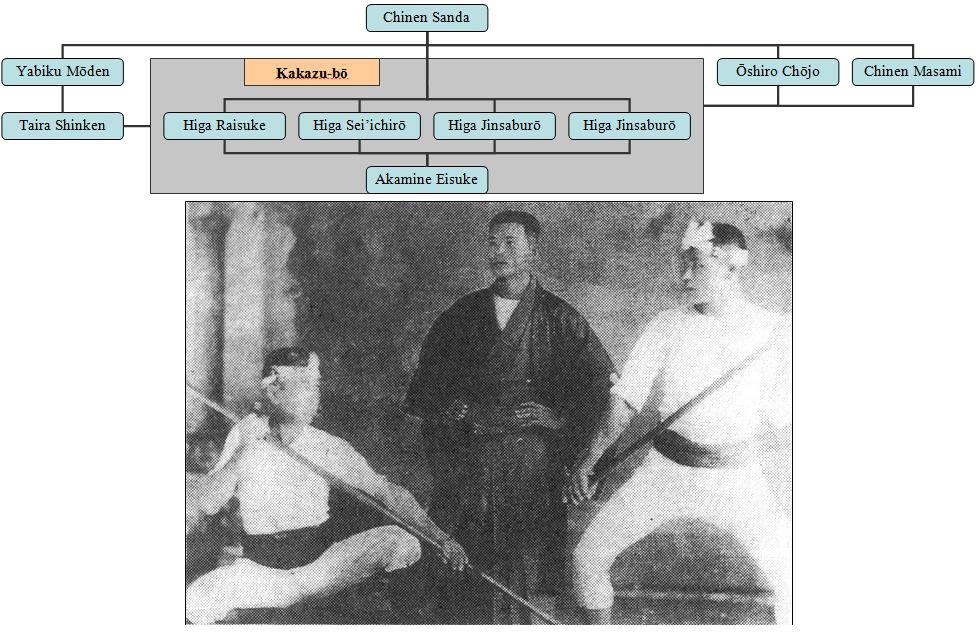Chinen Masami (1898–1976) was an Okinawan bōjutsu expert. He taught privately at his home in Shuri Tōbaru, Okinawa. He named his style Yamannī-ryū after his grandfather Chinen Sanrā 知念三良 (1842–1925).
There is some confusion about the first name of Chinen Sanrā. For instance, various high-ranking Okinawan kobudō masters refer to him as Masanrā 真三良. Let’s get to it and try to clear things up.
First of all, what was his name in the first written sources? In an unpublished handwritten book by Nagamine Shōshin is found a page describing the details of an interview of Nagamine with Chinen Masami in 1967 at the latter’s home at Shuri. In the interview, Chinen Masami said his grandfather’s name was Sanrā 三良.
Some years earlier, in 1961 a newspaper reported: “Chinen [Masami]’s grandfather Sanrā三郎 was known as a bō expert, his technique being called the “kata of Yamannī.” [Chinen Masami] received direct transmission of Sakugawa no kon (bōjutsu) from his grandfather Sanrā.”
The above are the two oldest instances that actually provided the first name of Chinen Yamane. Both where provided by Chinen Masami, who identified himself as the grandson of Chinen Sanrā.
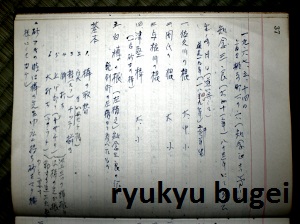
Interview notes by Nagamine Shōshin of Matsubayashi-ryū. Photo: Andreas Quast. 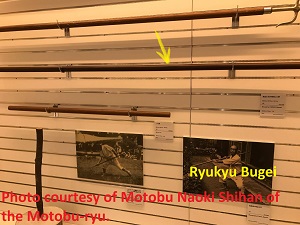
Bo of Chinen Masami on display at the Okinawa Karate Kaikan. Courtesy of Motobu Naoki Shihan of the Motobu-ryu. 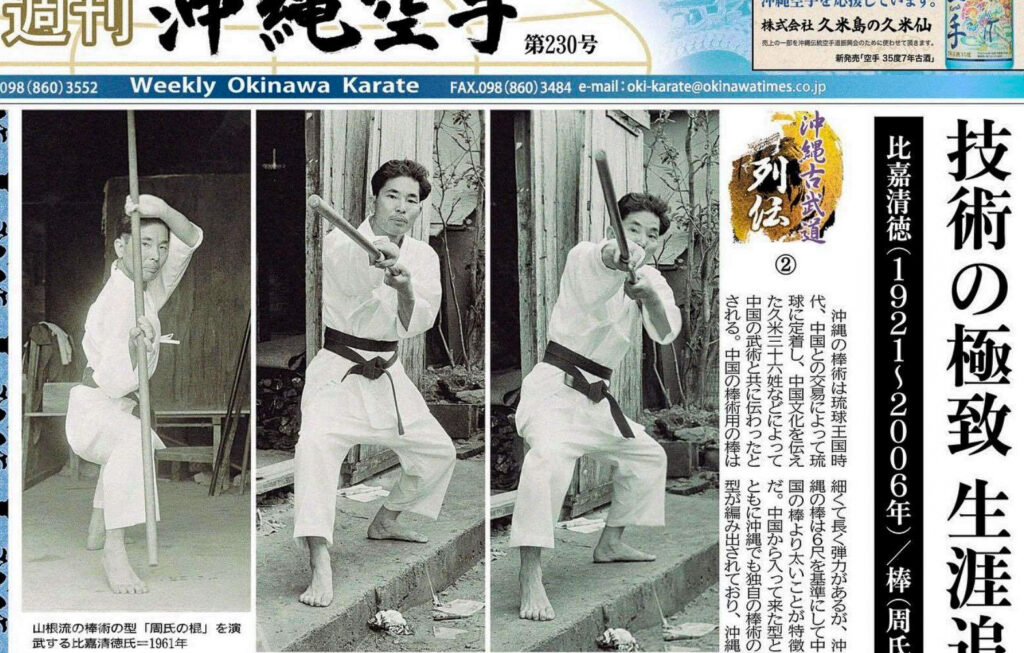
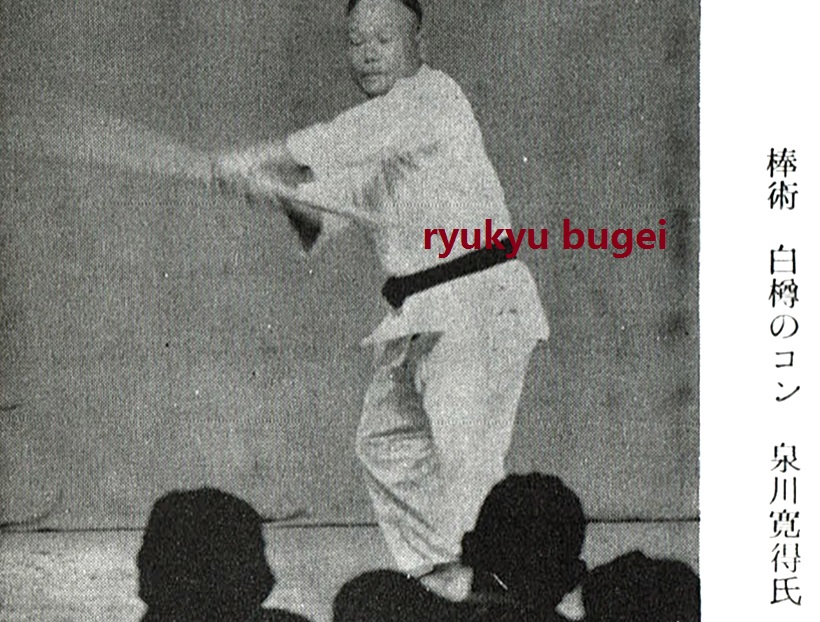
Izumikawa Kantoku, Shirotaru no Kon. Courtesy of Motobu Naoki Sensei of the Motobu-ryū. 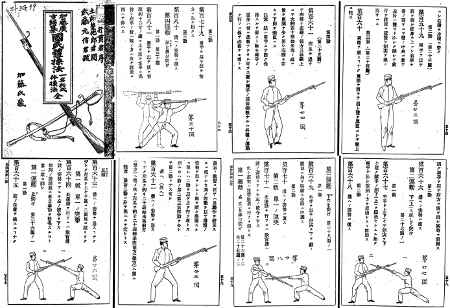
From ” ‘National Gymnastics (国民体操法),’ otherwise known as the ‘Method of Military Drill’ (兵式体操法),” 1896. You can see here that the term “gymnastics” (taisō 体操), which was abundantly used in connection with Karate instruction in Okinawa, was closely related and actually derived from and meant military drill (heishiki taisō 兵式体操).
The first notes are older, without a first name though. When in 1914 Funakoshi Gichin published his talks of Asato Ankō in a newspaper article, he mentions Yamane Chinen as one of the various martial artists at his time in Okinawa.
In a newspaper article from 1918, Sanrā was described as “Yama no mae no Usumē” (山の前のウスメー). It means something like “venerable old man who lives at the base of the hill.” Corrupted to Yamannī (no) Usumē, this name is still heard today.
In 1930, Miki Jisaburō mentioned “the famous bōjutsu master Yamane no Chinen.” Miki even recorded several kata he had learned from a student of Yamane no Chinen, one of which you can view here.
Finally, in 1957, Chibana Chōshin actually met Yamane Usumē, whom he clearly identified as a member of the civilian class, not the shizoku (samurai) class.
Now, name Sanrā 三良 is a typical old-style Okinawan childhood name. The characters are pronounced either Sanrā, Sanrū, or Sandā. This kind of name is a so-called childhood name (warabi-nā). In the Ryūkyū kingdom era commoners used this kind of name for their entire life. In case of the higher society levels, such as Okinawan “samurē,” there was no such name as Sanrā 三良. Instead, there was the name Masanrā 真三良, with a prefix Ma~ 真. And among the aristocracy the same name was written Masanrāgani 真三良金, with the suffix ~gani 金. In this way, social status was indicated by the childhood name.
Moreover, other than Okinawan samurē and aristocracy, commoners did not have a family name. In other words, there were probably several commoners named Sanrā in an area. It was only after the dissolution of the kingdom and establishment of Okinawa Prefecture in 1879 that common people also received a family name. Often they would just be named after a place or another convenient name-giving method was used. As a result, everyone in Okinawa has a name that might even be famous in Ryūkyū history, without that person even being actually related to any former rank holder or aristocracy. Imagine your name would translate to something like “grand chief stationed at the mountain top” or something. It sounds pretty cool, doesn’t it? My name translates to something like “Big Brush,” which is not very heroic I guess.
Because there were always several commoners with the same livelong childhood-name in an area, how would people exactly identify a person? This is the reason for the existence of the “yagō,” that is, unique names to identify commoners otherwise difficult to identify. In such a yagō name, the name of the town and block of residence might be used, as well as other descriptive terms, geographical hints, references to some family business etc. Like this, “Yama no mae” or “Yamani” refers to a place “in front of the hill” or “at the base of the hill.”
Next, as can be seen in Yamannī (no) Usumē, there is the noun usumē ウスメー. It is a noun used exclusively and specifically for an old man or a grandfather from the class of the commoners. That is, a person that had no rank within the royal government organization and whose family did not have an official genealogy. These were the so-called mukei, lit. persons with no genealogy. On the other hand, among the persons and families of rank who had an official genealogy, the old men or grandfathers were called tanmē タンメー. These were the so-called keimochi or “holder of a genealogy.”
In short, his name was Chinen Sanrā, he was a commoner, and he was otherwise also known as “venerable old man who lives at the base of the hill,” and he was somehow related to the village of Chinen.
BTW, in the 1961 newspaper report it was also said that kata of Chinen Sanrā are “still preserved in the Kakazu district of Madanbashi, but now there are only a few experts as it is a forgotten martial art. It is only inherited by a few elders.” These kata of Chinen Sanrā are handed down at Shimbukan of Akamine Hiroshi Sensei and I have reported about this lineage several times over the last decade, such as here, here, here, here, here, etc.pp., in the video below. This kata serious was previsouly unofficial, but has recently been made a part of the teaching curriculum, which I am glad they did.
This kata series of the Shimbukan is not so much interesting from it technical contents, but it is important to understand the technical transformation of what is referrred to as “Yamannī-ryū” 山根流, or “the martial arts style of (bōjutsu by the venerable old man who lives at) the base of the hill.”
© 2022, Andreas Quast. All rights reserved.

